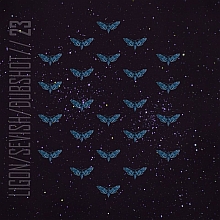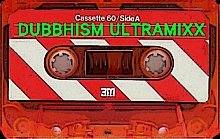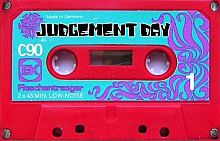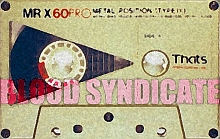
The mercenary army of Carthage, the enemy of Rome, was led by Hannibal, the legendary military commander who led some 50.000 men and 37 war elephants over the Alps. In this post we'll look at four of his most famous battles, and we'll try to find out if astrology has something to say about them.
Nasty asteroids and devious dwarfs
We'll be focussing on the relatively new information that is available since the discovery of the asteroids Pholus and Nessus (also known as Centaurs) and the dwarf planets Eris, Sedna and Chaos. Why? Because the mythology of these bodies is connected with war and strife, in various ways. We'll also look at the influence of asteroid Fortuna, the Goddess who spins the Wheel of Fortune, the closely related asteroid Karma and of course the asteroids named after Hannibal and Rome.
Star wars for real
When it comes to the astrology of war, there's a very long tradition, going back to ancient Babylon. Even in the Middle Ages the most important task of court astrologers was to provide detailed strategic and tactical advice by interpreting the sky. The astrological theory that was used in the Middle Ages is well known. On War for example is a treatise by the 13th century astrologer Guido Bonatti. In this text Bonatti explains how to predict the winner of a battle and so on. Of course, that's not the present goal. We'll look at the characteristics of battles and compare these to certain astrological clues.

Battle of the Trebia ~ Limb by limb
Date
On or around the winter solstice of 218 BC (21 december)
Regular aspects
Sun conjunct Mercury (2°07)
Dwarf planet aspects
Sun conjunct Sedna (0°56)
Mercury conjunct Sedna (1°11)
Uranus conjunct Hannibal (0°07)
Uranus trine Chaos (1°13)
Uranus trine Rome (2°15)
Main characteristics of the battle
Hannibal prepares a plan to take advantage of the weaknesses of the "impetuous and headstrong" Roman commander Sempronius. After the hotheaded Sempronius takes the bait, he sends his cold, hungry troops across the Trebia river; the water breast-high and ice-cold. Arrived on the other side, the Roman soldiers are so cold they can scarcely hold their weapons: they have lost the use of their limbs. The Roman army loses some 30.000 men on this day. It's the largest defeat since the war against the Gauls 125 years earlier.
Mythology and interpretation
Sun conjunct Sedna tells the story of the Roman soldiers crossing the cold river. Sedna is the Goddess of the sea and marine animals in Inuit mythology (most definitely ice-cold water). Her story is a rude creation myth. At sea, Sedna has a fight with her father, and while she is in the water, trying to hold on to her father's kayak, he chops off her fingers (quite close to losing the use of her arms). Sedna sinks to the underworld, becoming the ruler of the deep.
Synchronicities
Astrologically speaking, a conjunction with the Sun is pretty much the biggest gun a dwarf planet like Sedna can shoot. Although the alignment is not exact (the date isn't exact either) it is well within critical range. Sedna's second conjunction, with Mercury, is less tight. Sun conjunct Mercury could be about the application of logic, cunning and dirty tricks. Uranus conjunct Hannibal and Uranus trine Chaos indicate sudden chaos and confusion through the use of innovative tactics. Rome receives a sudden blow to the head.

Battle of Lake Trasimene ~ The Art of Ambush
Date
24 june 217 BC
Regular aspects
MercuryR conjunct Venus (1°41)
Sun conjunct Jupiter (2°02)
Dwarf planet/asteroid aspects
Mars conjunct Chaos (0°01)
Neptune trine Eris (0°02)
Uranus conjunct Hannibal (1°25)
Main characteristics of the battle
After a wild chase through Tuscany, Hannibal plans the largest ambush in military history (record still standing). He outsmarts the overconfident Roman commander Flaminius, using the smoke of small campfires to trick him, and fog from the lake as his cover. Hannibal suddenly attacks the Roman army from three sides. Of the initial Roman force of 30.000 some 15.000 are either killed in battle or drowned while trying to escape into the lake. All of this happens in less than four hours. After the battle, Rome is in shock. In response, the Roman army avoids pitched conflicts with Hannibal from now on.
Mythology and interpretation
Mars is conjunct Chaos. Mars is of course the God of War and it would seem to represent Hannibal and his army. Chaos points to the most basic, primal, existential battles we have to fight, like facing the void, the abyss. The fog from the lake as a cover is very Neptunian, as Neptune rules water, fog and confusion. Eris is the darkest of all Dark Goddesses. She's about discord, anger and rough justice, and she's also a trickster. The trine aspect with Neptune is certainly bad news for those who are victim of confusion. Uranus is still conjunct asteroid Hannibal, but less tight than at the Trebia.
Synchronicities
At high noon on june 24th 217 BC, Mars is exactly conjunct Chaos. If we assume that Mars represents Hannibal's army, this conjunction suggests that Rome has just been hit by the meanest, most primordial forces of (human) nature. After this battle, Hannibal will officially become Rome's worst nightmare. Neptune trine Eris is close to exact on the 24th. It's a 'quick' link between smoke and mirrors (Neptune) and raging anger and strife (Eris).

Battle of Cannae ~ The Hand of Fate deals its Mighty Blow
Date
2 august 216 BC
Regular aspects
Uranus square Pluto (1°05)
Sun trine Pluto (1°27)
Mars square Venus (1°04)
Sun conjunct Jupiter (2°28)
Dwarf planet/asteroid aspects
Sun conjunct Pholus (0°01)
Pluto trine Pholus (1°28)
Hannibal conjunct Karma (1°30)
Neptune conjunct Fortuna (0°21)
Neptune trine Galactic Center (0°10)
Galactic Center trine Fortuna (0°31)
Main characteristics of the battle
Hannibal plans what turns out to be the largest mass killing in ancient military history: 70.000 Romans die in six hours time. The famous tactical move Hannibal uses to encircle the Roman army is called double envelopment. After this devastating battle of annihilation, Hannibal assumes the Romans will surrender. This does not happen. The Battle of Cannae is the last big military succes for Hannibal. He will fail in his political mission: to get Rome on its knees.
Mythology and interpretation
In Greek mythology, Pluto is the boss of the underworld. By itself, Uranus square Pluto is a dangerous aspect, but it would not be enough to convince Cicero that the Battle of Cannae was actually written in the stars. Sun trine Pluto or Mars square Venus isn't going to make a really big difference either. Once again, the small bodies fill in certain details of the story. In Greek mythology, Pholus is the Centaur who causes the mass killing of Centaurs by Hercules. Pholus also symbolizes the point of no return, the first domino stone in a range. Meanwhile, Fortuna is activated by the conjunction with Neptune. This means that the Wheel of Fortune is spinning, but the message is confusing. Any enemy would surrender after such a terrible blow, and therefore Hannibal assumes that he has won the war (altho some say he should have followed up his victory with a march on Rome) but he will soon find out that Rome is not going to bow for him.
Synchronicities
At high noon on august 2nd 216 BC, the Sun is exactly conjunct Pholus. Around this time, Roman soldiers start falling like dominoes. As if that wasn't enough, asteroid Hannibal is conjunct asteroid Karma. At the same time, Neptune is almost exactly conjunct Fortuna and they are both trining the Galactic Center. In other words: true history is in the making, the fate of two of the biggest nations on the planet is being decided, but the real message isn't clear yet.

Battle of Zama ~ Final Confrontation
Date
19 october 202 BC
Regular aspects
Mars opposite Pluto (1°43)
Dwarf planet/asteroid aspects
Eris conjunct Roma (0°60)
Main characteristics of the battle
Hannibal hasn't lost a single battle yet, but he probably senses this will be the first one, even though his army outnumbers the Romans significantly. His opponent Scipio Africanus has studied Hannibal's tactics and strategy and he is now using these against Hannibal to destroy him. In the same way, some of the 80 Carthaginian war elephants end up stampeding into their own lines, causing total confusion. In the end, Hannibal flees from Zama. This battle marks the end of the Second Punic War.
Mythology and interpretation
Unlike the other battles, this one is perhaps best characterized by the positions of two planets: Mars and Pluto. They are in opposition, and for Hannibal (Mars), it's the final shootout with destiny, Pluto, Scipio Africanus and with himself. A few days before the battle, asteroid Hannibal is conjunct asteroid Irene (peace). Meanwhile, Eris is conjunct Roma.
Synchronicities
The day before the battle, the two commanders talk to each other face to face. Let's call it a staredown.
Back to Cicero
"But why say more against a theory which every day's experience refutes? I recall a multitude of prophecies which the Chaldeans made to Pompey, to Crassus and even to Caesar himself (now lately deceased), to the effect that no one of them would die except in old age, at home and in great glory. Hence it would seem very strange to me should anyone, especially at this time, believe in men whose predictions he sees disproved every day by actual results."
Cicero ~ De Divinatione.
Fair enough! And if the Roman statesman could have heard the story presented here, he might have wondered cynically if there is a mass killing every time the Sun is conjuct Pholus. We don't have the impression that this is true, altho this kind of thing can't be proven.
















